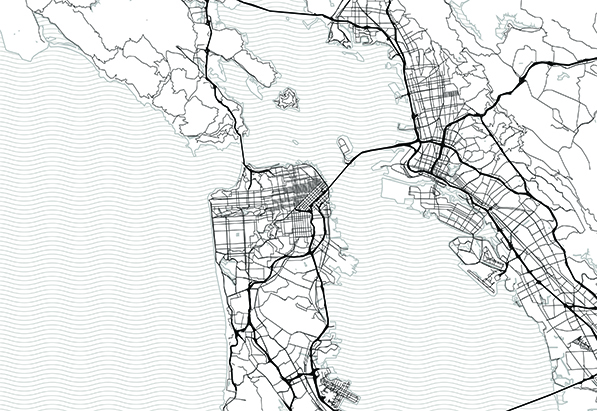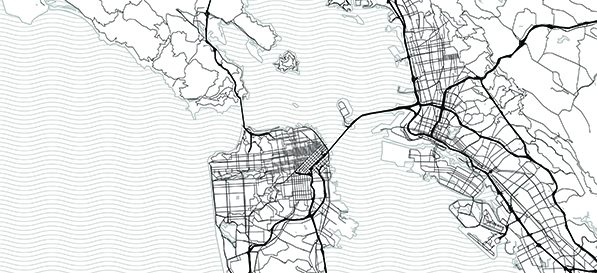
In response to the growing coronavirus (COVID-19) concerns, seven Bay Area counties and one Bay Area city announced “shelter in place” orders on March 16, 2020, effective on March 17, 2020, at 12:01 a.m.
The shelter-in-place orders direct everyone to stay inside their homes except to meet basic needs such as going to the doctor and buying groceries or medicine. The orders allow residents to leave their homes for what each county defines as “essential” activities, governmental functions or to operate “essential businesses,” such as healthcare operations, gas stations, grocery stores, restaurants (for take-out or delivery) pharmacies, banks, etc.
The seven counties to shelter in place for the next three weeks, until at least April 7, 2020, include:
- San Francisco County
- Santa Clara County
- San Mateo County
- Marin County
- Contra Costa County
- Alameda County
- Santa Cruz County
The city of Berkeley also issued its own shelter-in-place order on March 16, 2020.
A Frequently Asked Questions document published by the city of San Francisco regarding the shelter in place orders explains that unless an individual’s work includes what’s considered an essential function, they cannot leave their home to go to work — although working remotely may be done when allowed by employers.
On the same day these shelter in place orders were announced, San Francisco took additional measures related to the COVID-19 pandemic, while Oakland published guidance on use of its sick leave for COVID-19 prior to the shelter in place orders.
San Francisco Announces Workers and Families First Program
San Francisco Mayor London Breed announced a new program to provide additional paid sick leave to private-sector workers who’ve been impacted by COVID-19. The Workers and Families First Program will provide $10 million in public funding to businesses so they can offer an additional five days of sick leave pay to workers beyond their existing policies.
All San Francisco businesses will be eligible under the program, and up to 20 percent of funds are reserved for small businesses with 50 or more employees. The city will contribute up to one week (40 hours) at $15.59 per hour (minimum wage) per employee, or $623 per employee, and the employer will pay the difference between the minimum wage and an employee’s full hourly wage. The program is only available if the employee has exhausted or is not eligible for federal or state supplemental sick leave, and the employer agrees to extend sick leave beyond current benefits.
This program will be available for employees to use pursuant to San Francisco’s Paid Sick Leave Ordinance (PSLO) and the latest guidance issued by San Francisco’s Office of Labor Standards Enforcement (OLSE) (or any subsequent guidance released by OLSE), most recently updated March 16, 2020. OLSE guidance addresses employer verification of paid sick leave and circumstances in which an employee may use paid sick leave, given the local health emergency.
Employer Verification of Paid Sick Leave
Under normal circumstances, PSLO Rule 2.3 allows employers to require that employees provide a doctor’s note when using paid sick leave for more than three consecutive days. According to OLSE guidance, however, this rule is suspended effective immediately and has been replaced with the following:
“Employers may not require a doctor’s note or other documentation for the use of paid sick leave taken pursuant to the Paid Sick Leave Ordinance during the duration of the Local Health Emergency regarding Novel Coronavirus Disease 2019.”
The OLSE notes that this guidance is temporary and only effective for the current local health emergency’s duration. Once the local health emergency expires, Rule 2.3 will revert automatically to the previous version.
Employers can get more information at the Office of Economic & Workforce Development website, where program applications are expected to be available later this week.
Employee Use of Paid Sick Leave
Additionally, the guidance includes the situations that would require any employers covered by the PSLO to allow covered employees to use accrued sick leave. This includes when employees take time off work because:
- Public health officials or healthcare providers require or recommend an employee isolate or quarantine to prevent spread of disease;
- The employee falls within the definition of a “vulnerable population” under the San Francisco Department of Health’s March 6, 2020, guidelines or any subsequent updates. (As of March 6, 2020, a “vulnerable population” is a person who is 60 years old or older, or a person with a health condition such as heart disease, lung disease, diabetes, kidney disease or weakened immune system);
- The employee’s business or a work location temporarily ceases operations in response to a public health or other public health official’s recommendation;
- The employee needs to provide care for a family member who isn’t sick but who public health officials or healthcare providers have required or recommended they isolate or quarantine; or
- The employee needs to provide care for a family member whose school, childcare provider, senior care provider, or work temporarily ceases operations in response to a public health or other public official’s recommendation.
Oakland Paid Sick Leave Law Guidance
The city of Oakland has also published COVID-19-specific guidance for employers covered under Oakland’s Paid Sick Law, “COVID-19 and Oakland’s Paid Sick Leave Law,” which outlines the requirements under the ordinance.
As a reminder, additional localities with their own Paid Sick Leave ordinances include:
- Berkeley
- Emeryville
- Los Angeles (City)
- San Diego (City)
- San Francisco
- Santa Monica
Employers subject to state and local paid sick leave laws must, when there are conflicting requirements, follow the stricter standard or law that is most beneficial for the employee.
Bianca Saad, Employment Law Subject Matter Expert, CalChamber
For more COVID-19-related federal, state and local resources, including CalChamber coverage, visit the CalChamber Coronavirus (COVID-19) webpage.







